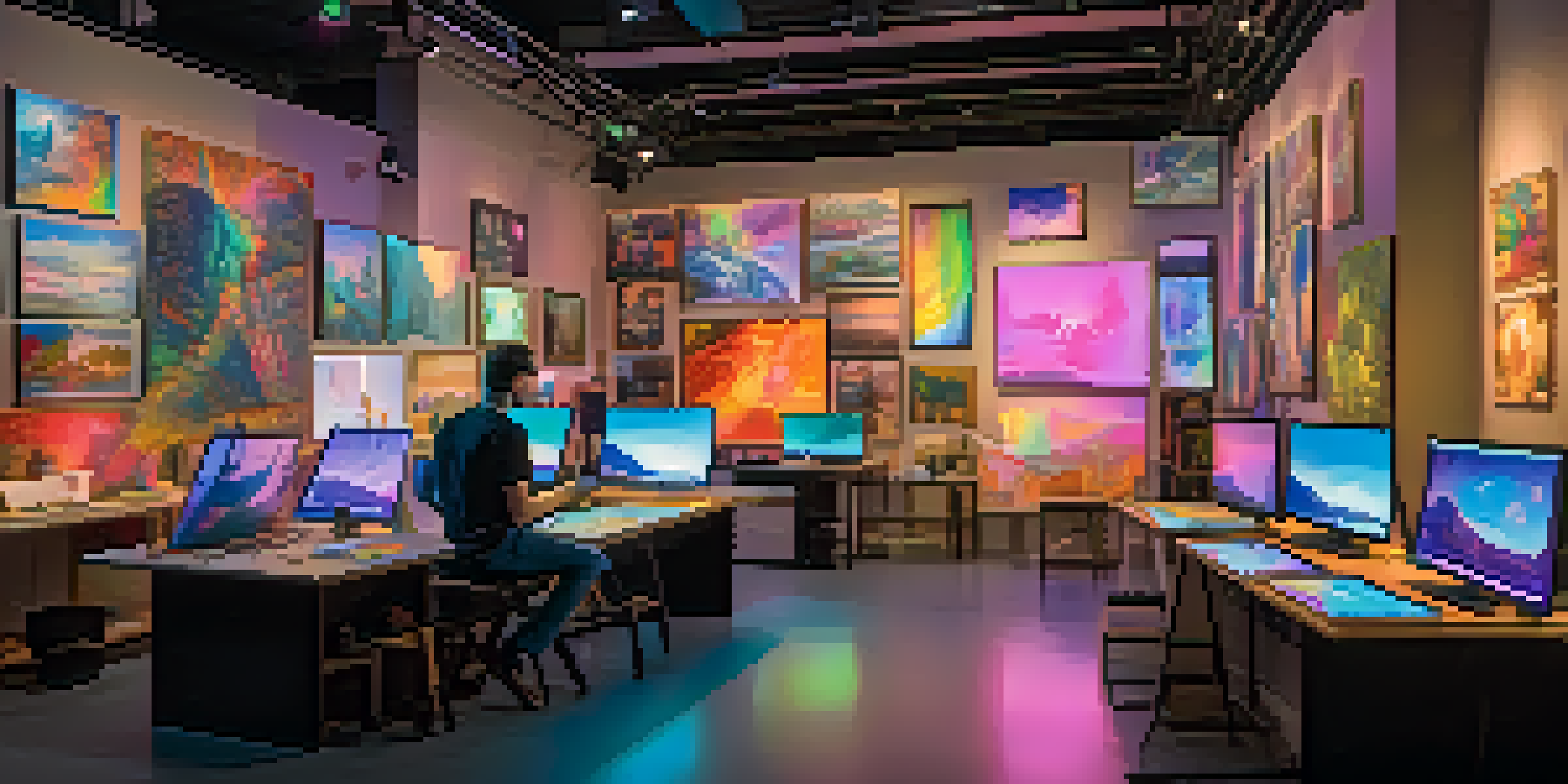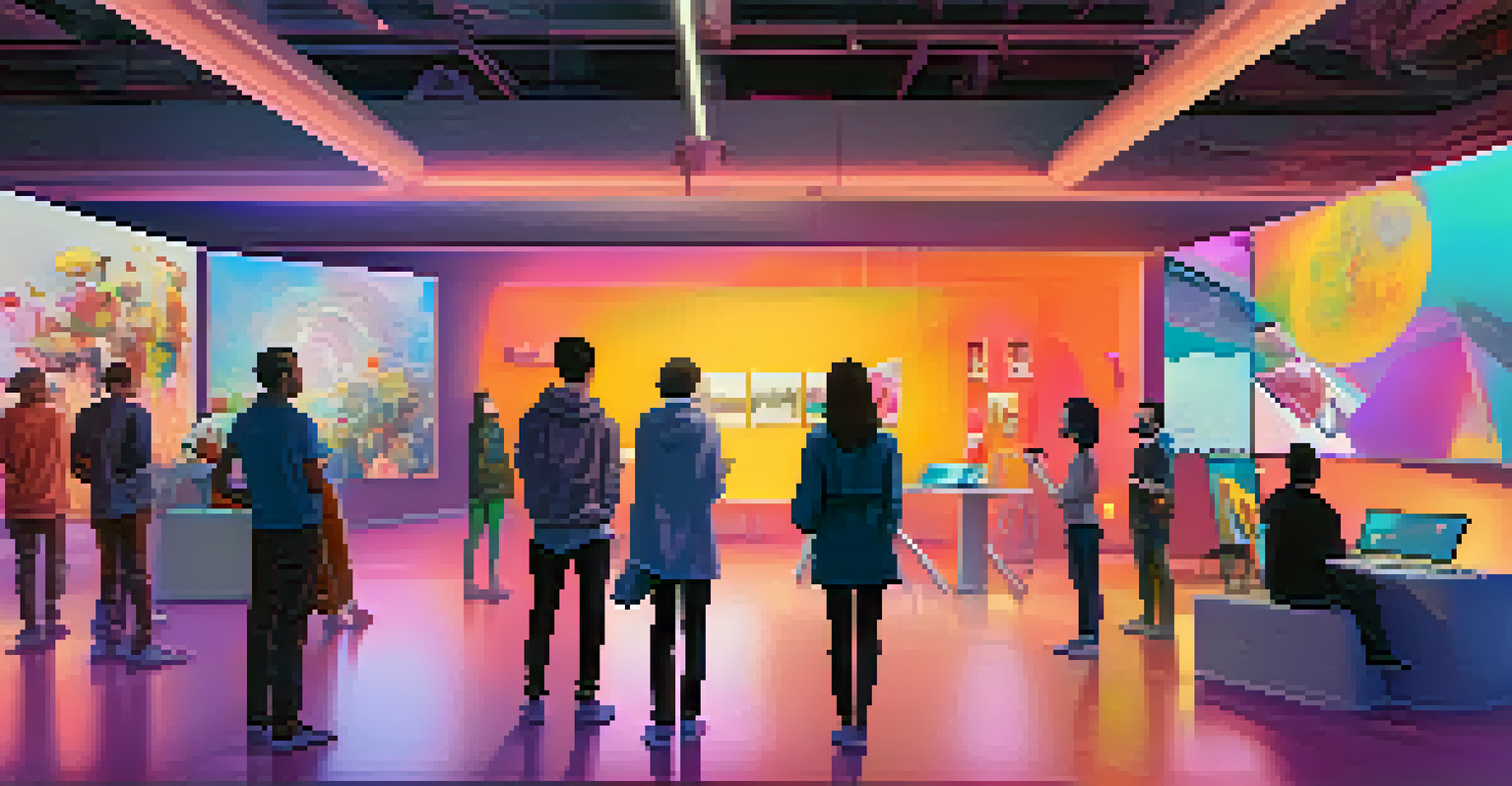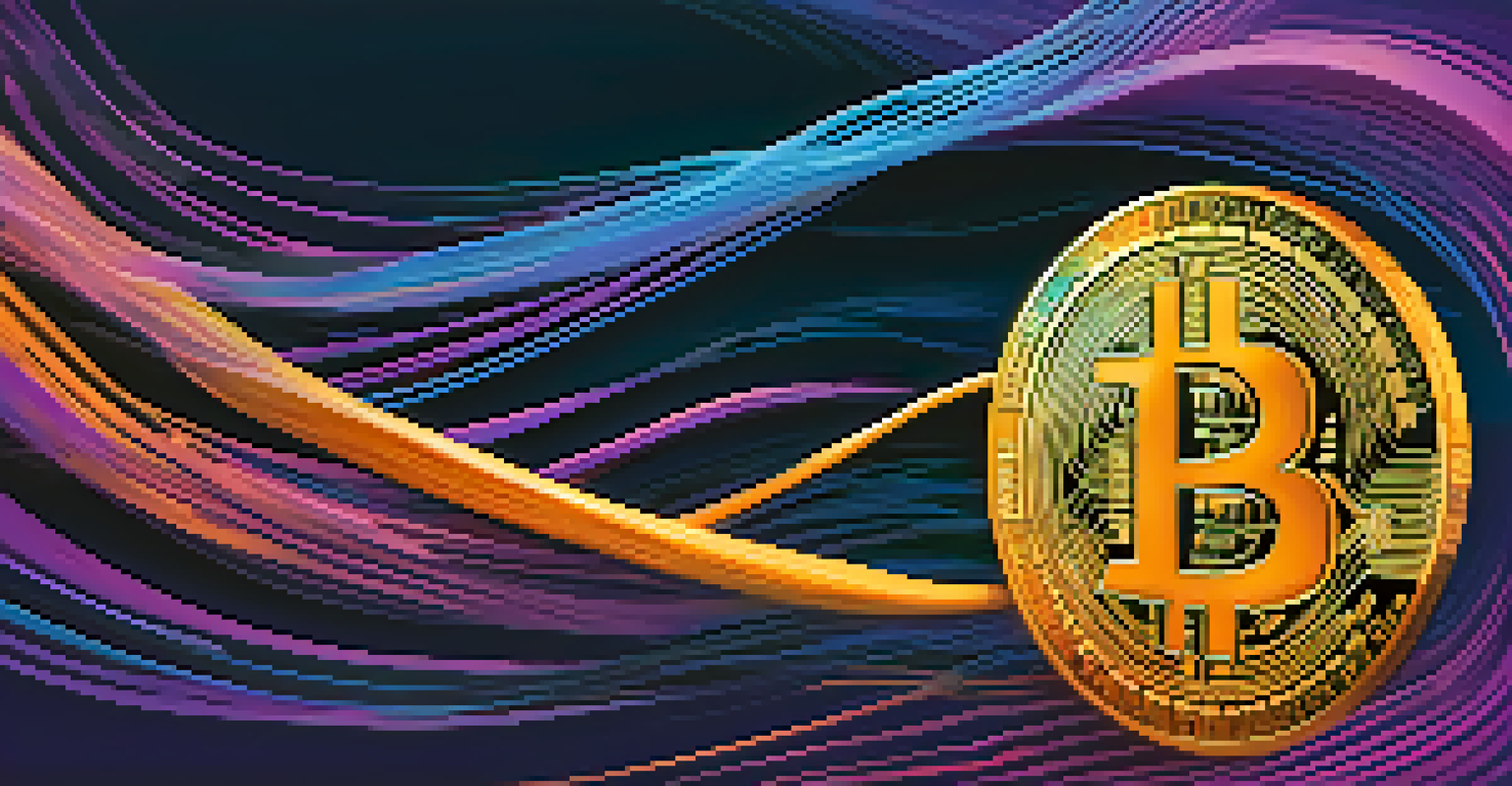Creating Digital Art: Bitcoin’s Influence on Artists

Understanding Digital Art in the Age of Bitcoin
Digital art has transformed from simple graphics to complex creations that captivate audiences worldwide. With the rise of Bitcoin, artists are exploring new avenues for expression and monetization. This evolution is not just about technology; it's about a cultural shift in how we perceive and value art.
Art is not freedom from discipline, but disciplined freedom.
Bitcoin, as a decentralized currency, offers artists an alternative to traditional payment methods, allowing them to sell directly to collectors without intermediaries. This direct engagement fosters a more personal connection between the artist and their audience. As a result, artists can retain a larger share of their earnings, which is a significant advantage in a competitive market.
Moreover, the rise of non-fungible tokens (NFTs) has revolutionized the digital art scene. By linking digital creations to blockchain technology, artists can prove ownership and authenticity in a way that was previously unattainable. This innovation empowers artists to showcase their work on a global stage, attracting collectors who are eager to invest in unique pieces.
The Role of NFTs in Digital Art Monetization
NFTs, or non-fungible tokens, have become a buzzword in the art world, particularly among digital artists looking to monetize their work. Unlike traditional art, NFTs allow digital assets to be bought, sold, and traded on blockchain platforms, creating a new marketplace for artists. This has opened the door for many to earn income from their creations in ways that were not possible before.

For instance, an artist can mint an NFT of their digital painting, which can then be auctioned off to the highest bidder. This process not only elevates the value of digital art but also introduces scarcity, as each token is unique. As collectors flock to acquire these digital assets, artists find themselves empowered to set their prices and terms, leading to greater financial independence.
Bitcoin Empowers Digital Artists
Bitcoin allows artists to sell directly to collectors, enhancing their earnings and personal connection with audiences.
The NFT craze also fosters a sense of community among artists and collectors alike. Platforms like OpenSea and Rarible provide spaces where creators can showcase their portfolios, gain visibility, and connect with potential buyers. This collaborative environment encourages artistic innovation while also allowing artists to navigate a rapidly changing market.
Challenges Faced by Digital Artists in the Crypto Space
Despite the opportunities Bitcoin and NFTs present, digital artists face several challenges in this evolving landscape. One major concern is the environmental impact associated with cryptocurrency mining and transactions. Many artists are becoming increasingly aware of their carbon footprint and are seeking eco-friendly alternatives.
The future belongs to those who believe in the beauty of their dreams.
Additionally, the volatility of Bitcoin can pose risks for artists who rely on it for income. Prices can fluctuate dramatically, which may affect the perceived value of their work. Artists must navigate this uncertainty carefully, balancing the benefits of accepting cryptocurrency with the potential downsides.
Moreover, the sheer volume of digital art being produced and sold can lead to oversaturation in the market. With so many creators vying for attention, it can be challenging for individual artists to stand out. Developing a unique brand and engaging with the community becomes essential for success in an increasingly crowded space.
How Bitcoin is Shaping Artistic Communities
The influence of Bitcoin extends beyond individual artists; it is reshaping artistic communities as well. Online platforms that facilitate Bitcoin transactions often cultivate vibrant communities where artists share ideas, collaborate, and support each other. This sense of belonging can be incredibly valuable, especially for emerging artists navigating their careers.
As artists connect with one another, they can exchange knowledge about best practices for creating, selling, and promoting digital art. This collaborative spirit encourages innovation and experimentation, allowing artists to push the boundaries of their work. The shared passion for both art and cryptocurrency creates a unique intersection of creativity and commerce.
NFTs Revolutionize Art Monetization
Non-fungible tokens (NFTs) create a unique marketplace for digital art, enabling artists to establish ownership and value.
Moreover, these communities often engage in discussions about the future of art and technology. Artists and collectors alike are exploring what it means to be a creator in the digital age, considering questions of ownership, copyright, and the evolving role of artists in society. This dialogue enriches the art world and fosters a deeper understanding of how Bitcoin is influencing artistic expression.
The Future of Digital Art with Bitcoin's Influence
As Bitcoin continues to gain traction, the future of digital art looks promising. Artists are increasingly embracing this technology, which allows for greater autonomy and creativity in their work. With the potential for new forms of engagement and revenue streams, the digital art landscape is set to evolve dramatically.
Emerging technologies, such as augmented reality (AR) and virtual reality (VR), are also intertwining with Bitcoin and NFTs. Artists are experimenting with immersive experiences, creating interactive art that challenges traditional forms. This fusion of technology and creativity opens up a world of possibilities for how art can be experienced and valued.
Ultimately, the future will likely see a more diverse range of artistic expressions and business models. As artists become more savvy in navigating the crypto space, they will continue to redefine what it means to create and sell art. The influence of Bitcoin will undoubtedly play a pivotal role in shaping this exciting journey ahead.
Success Stories: Artists Thriving with Bitcoin
In the midst of this digital art revolution, many artists have found success by embracing Bitcoin and the NFT market. Take, for instance, digital artist Beeple, who famously sold an NFT for $69 million at a Christie's auction. His story not only highlights the potential of NFTs but also underscores how Bitcoin can elevate an artist's career to unprecedented heights.
Other artists have leveraged their platforms to create unique series of NFTs, building devoted followings that appreciate their work. By engaging with collectors directly and sharing their creative processes on social media, these artists have cultivated loyal communities that support their endeavors. This direct connection has transformed the traditional artist-collector relationship into a more collaborative and interactive experience.
Community and Innovation Flourish
Artistic communities around Bitcoin and NFTs foster collaboration and knowledge sharing, driving innovation in digital art.
These success stories serve as inspiration for aspiring digital artists looking to carve their own paths in the industry. They demonstrate that with creativity, determination, and a willingness to adapt to new technologies, artists can not only survive but thrive in the ever-changing world of digital art and cryptocurrency.
Conclusion: Embracing Change in the Art World
The intersection of Bitcoin and digital art represents a thrilling chapter in the art world. As artists continue to explore innovative ways to create, share, and monetize their work, they are also navigating the challenges that come with such transformation. Embracing these changes can lead to exciting opportunities for both artistic expression and financial independence.
While the landscape may seem daunting, artists are finding new ways to connect with audiences and showcase their unique talents. The rise of Bitcoin and NFTs has sparked a wave of creativity, pushing artists to think outside the box and experiment with their craft. This spirit of innovation is essential in a world that is constantly evolving.

In conclusion, the influence of Bitcoin on digital art is profound and multifaceted. As we look to the future, it is clear that this relationship will continue to shape the art community and redefine the meaning of creativity in the digital age.